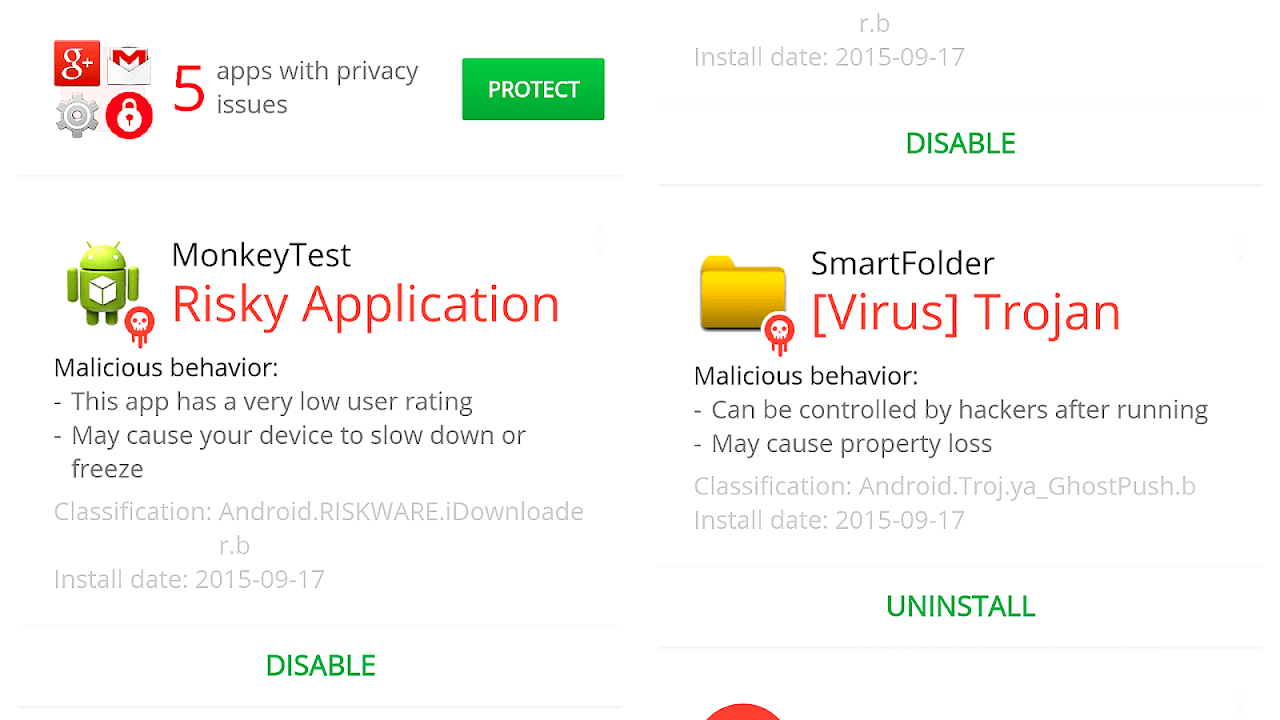
In computing, a Trojan horse, or Trojan, is any malicious computer program which misleads users of its true intent. The term is derived from the Ancient Greek story of the deceptive wooden horse that led to the fall of the city of Troy.
Trojans are generally spread by some form of social engineering, for example where a user is duped into executing an e-mail attachment disguised to be unsuspicious, (e.g., a routine form to be filled in), or by drive-by download. Although their payload can be anything, many modern forms act as a backdoor, contacting a controller which can then have unauthorized access to the affected computer. Trojans may allow an attacker to access users' personal information such as banking information, passwords, or personal identity (IP address). It can infect other devices connected to the network. Ransomware attacks are often carried out using a Trojan.
Unlike computer viruses and worms, Trojans generally do not attempt to inject themselves into other files or otherwise propagate themselves.

Maps, Directions, and Place Reviews
Origin of the concept
This terminology occurs for the first time in a US Air Force report in 1974 on the analysis of vulnerability in computer systems. It was made popular by Ken Thompson in his Turing lecture which he gave at the reception of the Turing Award in 1983, attributed to him for having created UNIX. His conference is subtitled:
He mentioned that he knew about the possible existence of Trojan horses in a report on the security of Multics of which he was unfortunately unable to find a reference. However Paul Karger and Roger Schell affirm that this is their above cited report.
Example Of Trojan Horse Virus Video
Malicious uses
Trojan in this way may require interaction with a malicious controller (not necessarily distributing the Trojan) to fulfill their purpose. It is possible for those involved with Trojans to scan computers on a network to locate any with a Trojan installed, which the hacker can then control.
Some Trojans take advantage of a security flaw in older versions of Internet Explorer and Google Chrome to use the host computer as an anonymizer proxy to effectively hide Internet usage, enabling the controller to use the Internet for illegal purposes while all potentially incriminating evidence indicates the infected computer or its IP address. The host's computer may or may not show the internet history of the sites viewed using the computer as a proxy. The first generation of anonymizer Trojan horses tended to leave their tracks in the page view histories of the host computer. Later generations of the Trojan tend to "cover" their tracks more efficiently. Several versions of Sub7 have been widely circulated in the US and Europe and became the most widely distributed examples of this type of Trojan.
In German-speaking countries, spyware used or made by the government is sometimes called govware. Govware is typically a Trojan software used to intercept communications from the target computer. Some countries like Switzerland and Germany have a legal framework governing the use of such software. Examples of govware Trojans include the Swiss MiniPanzer and MegaPanzer and the German "state trojan" nicknamed R2D2.
Due to the popularity of botnets among hackers and the availability of advertising services that permit authors to violate their users' privacy, Trojans are becoming more common. According to a survey conducted by BitDefender from January to June 2009, "Trojan-type malware is on the rise, accounting for 83-percent of the global malware detected in the world." Trojans have a relationship with worms, as they spread with the help given by worms and travel across the internet with them. BitDefender has stated that approximately 15% of computers are members of a botnet, usually recruited by a Trojan infection.

Notable examples
Private and governmental
- FinFisher - Lench IT solutions / Gamma International
- DaVinci / Galileo RCS - HackingTeam
- 0zapftis / r2d2 StaatsTrojaner - DigiTask
- TAO QUANTUM/FOXACID - NSA
- Magic Lantern - FBI
- WARRIOR PRIDE - GCHQ
Publicly available
- Netbus - 1998 (published)
- Sub7 by Mobman - 1999 (published)
- Back Orifice - 1998 (published)
- Beast - 2002 (published)
- Bifrost Trojan - 2004 (published)
- DarkComet - 2008 (published)
- Blackhole exploit kit - 2012 (published)
- Gh0st RAT - 2009 (published)
- MegaPanzer BundesTrojaner - 2009 (published)
Detected by security researchers
- Clickbot.A - 2006 (discovered)
- Zeus - 2007 (discovered)
- Flashback Trojan - 2011 (discovered)
- ZeroAccess - 2011 (discovered)
- Koobface - 2008 (discovered)
- Vundo - 2009 (discovered)
- Meredrop - 2010 (discovered)
- Coreflood - 2010 (discovered)
- Tiny Banker Trojan - 2012 (discovered)
- Shedun Android malware - 2015 (discovered)
Source of the article : Wikipedia


EmoticonEmoticon